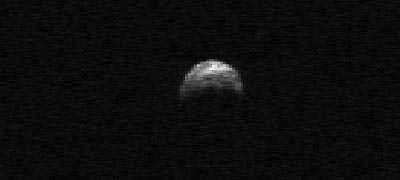Arecibo telescope tracks 'potentially dangerous' asteroid within 1.5 million miles of Earth
By Blaine Friedlander

A near-Earth asteroid named 2005 YU55 -- on the list of potentially dangerous asteroids -- was observed by the Arecibo telescope April 19 as it passed about 1.5 million miles from the Earth (about six times the distance to the moon).
The Arecibo Observatory, located in Puerto Rico, is part of the National Astronomy and Ionosphere Center, managed by Cornell on behalf of the National Science Foundation.
Arecibo radar imaging of 2005 YU55 showed that the asteroid is about 1,300 feet (400 meters) in size -- about a quarter-mile long -- and twice as large as previously estimated.
As they tracked the asteroid, Cornell researcher Ellen Howell and colleagues, including Cornell researcher Patrick Taylor, used high-precision radar to reduce uncertainties about its orbit by 50 percent. This improvement eliminated any possibility of an impact with the Earth for the next 100 years, and the asteroid was removed from the "Risk Page" maintained by NASA's Near-Earth Object Program Office at the Jet Propulsion Laboratory.
After circling the sun, 2005 YU55 will next approach the Earth to about 0.8 lunar distances Nov. 8, 2011. It will pose no impact hazard.
Robert McMillan of the Spacewatch asteroid detection program discovered the asteroid on Dec. 28, 2005. President Barack Obama has proposed that NASA's "Near Earth Object Observations" program budget be increased to $20.3 million in 2011 from $3.7 million in 2009. NASA has indicated that it intends to provide support to the Arecibo radar program if that funding remains in the budget. Rep. Jose Serrano, D-N.Y., added $2 million to NASA's near-Earth object research program in 2010 for support of the Arecibo research work. These funds will offset reduced funding from the National Science Foundation.
Media Contact
Get Cornell news delivered right to your inbox.
Subscribe